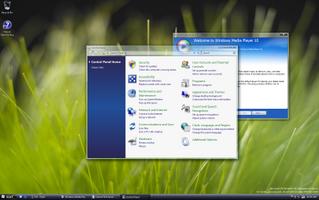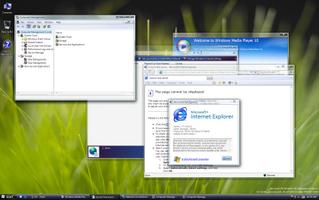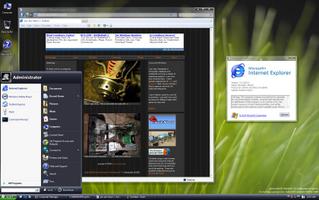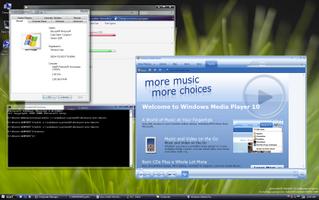The latest offering from Redmond, MSN Virtual Earth beta is making the buzz for all the wrong reasons.
The Register reports that Apple HQ is nowhere to be found on MSN virtual earth. Apparently, MSN virtual earth has chosen to rebuild the World Trade Center towers too. Looks like the images Microsoft used is way too old.
Clearly, MS has pushed a hastily built software that has not undergone enough testing to make even to alpha stage, as a beta. The stunt is an apparent knee-jerk reaction to the buzz Google is making with its map service and Google Earth. This is supposed to be a competition to Google Earth, but clearly the features or stability to be a credible competitor are missing. This is when Google has upped its sights and started to map the moon!
My gripes about MSN Virtual Earth.
1. The images are way too old. The image quality and resolution is way lacking when compared to Google Earth. Since MS seems to have used U.S.G.S archives which are 10 years old, this is to be expected. But hey, we are talking about one of the richest companies in the world. Surely they could have done better.
2. The map is not as responsive to panning as Google maps. The tiling does not work very well, often leaving large patches of yellow rectangles without resolving the underlying geography. Also, the maps load pretty slowly and often you are left staring at blank patches of screen for seconds before the tiled images start loading. You almost end up thinking that the server has stopped responding. Yeah, I am on 256 kbps broadband, not dial-up :-) .
3. Screws up Firefox. After some panning and zooming, some buttons on Firefox (I am using 1.0.5) does not work well. And hey, why does it disable my "Back" button?
4. "Locate me" feature. I don't understand the actual need for such a feature except for generating buzz. The feature requires ActiveX which I think is one-step backwards for Microsoft for making this technology work with other browsers such as Firefox. The I.P address based location does not work very well. It located me in Bombay, India whereas I am actually in Bangalore.
5. Sticky mouse buttons: The left mouse click tends to "stick" on the page. So even after I release the mouse button and move the mouse, the image keeps panning. I have to click the left mouse button once more to "release" the "stickiness".
6. The stupid compass: Why do you need that? It just eats up space on the map and is really not very useful.
7. Interface quality: The interface seems hastily thrown together and not well thought out. It is counter-intuitive if you are used to Google maps since the search and address box is on the left rather than on the right as in Google. To me, right position seems more intuitive and user friendly since that means the map does not overlap on the right edge of my screen and looks solid. Also, MS seemed to have not done much research on how surrounding colors affect the users ability to effectively view the maps. The choice of colors and color contrast leaves a lot to be desired. If I were the engineer, I would replace that stupid blue overlay on the top with something that increases the contrast and is less straining on the eyes.
The pluses.
1. It occupies more screen area than Google maps. Clearly this is an advantage.
2. Seems to show more places in India than Google. Hell, it even shows some obscure towns and villages in Kerala, my native state. Google maps suck in that respect.
Conclusion: Not enough reasons for anyone to switch to Virtual Earth if he/she is already using Google earth/google maps. I think MS should apologize, rename the release to MSN VE alpha, work on it a bit more and release a much better, user-friendly and fast beta. Then I would agree that it is competition.
Wednesday, July 27, 2005
Saturday, July 23, 2005
Apple - An "i" for Innovation
iMac, iPod, iTunes - Popular brand names from a company known for its innovative products - Apple.
Now it has become official. In a Businessweek poll conducted among top executives from across the planet, Apple won the top slot for the most innovative company, with nearly 25% of the votes.
3M came second with nearly 12% of the votes, followed by Microsoft. Big Blue came a distant 7th after GE, Sony and Dell in that order.
Another feather in the innovative cap of CEO Steve Jobs.
Way to go Apple! Well done.
Now it has become official. In a Businessweek poll conducted among top executives from across the planet, Apple won the top slot for the most innovative company, with nearly 25% of the votes.
3M came second with nearly 12% of the votes, followed by Microsoft. Big Blue came a distant 7th after GE, Sony and Dell in that order.
Another feather in the innovative cap of CEO Steve Jobs.
Way to go Apple! Well done.
Hasta-la-Vista Windows!
Microsoft has re-christened its unborn poster child,
"Windows Longhorn" as "Windows Vista".
The marketing speak from Microsoft is that Windows Vista brings clarity to the connected world.
Personally, I think "Longhorn" was much better than "Vista" though it gave rise to subtle bovine references.
It will be no wonder if the naming turns out to be prescient and puts an end to Microsoft monopoly on the desktop, considering the rate at which features are getting axed from Longhorn aka Vista.
(Also read Steven J Vaughan Nichols' article on axing of Monad from Longhorn).
Is it time yet to say "Hasta-la-Vista Microsoft"? Let us wait and watch.
"Windows Longhorn" as "Windows Vista".
The marketing speak from Microsoft is that Windows Vista brings clarity to the connected world.
Personally, I think "Longhorn" was much better than "Vista" though it gave rise to subtle bovine references.
It will be no wonder if the naming turns out to be prescient and puts an end to Microsoft monopoly on the desktop, considering the rate at which features are getting axed from Longhorn aka Vista.
(Also read Steven J Vaughan Nichols' article on axing of Monad from Longhorn).
Is it time yet to say "Hasta-la-Vista Microsoft"? Let us wait and watch.
Monday, July 11, 2005
Longhorn Screenshots
Some screenshots of Longhorn have made it to a few blogs today. The news has also hit Slashdot. The winbeta.org site claims that this cannot be part of Longhorn Beta1, since the build number 5203 is not part of the Beta1 builds, which means it must be a leak from inside Microsoft.
The screenshots show a system which looks like a modified Windows XP with transparency and some other eye candy and a black theme. Nothing great when you consider that this system was supposedly 5 years in the making.
Microsoft cannot even do a copy job well. ;-)
Btw, I have added a few screenshots right here with the new photo feature of blogger.
Originals, courtesy xerocool.







The screenshots show a system which looks like a modified Windows XP with transparency and some other eye candy and a black theme. Nothing great when you consider that this system was supposedly 5 years in the making.
Microsoft cannot even do a copy job well. ;-)
Btw, I have added a few screenshots right here with the new photo feature of blogger.
Originals, courtesy xerocool.







Thursday, July 07, 2005
Europe says no to software patents
On July 6, the European parliament decided
by a large majority to reject the software patents directive.
This is great news for the FOSS community and open software
innovation in general. The patent directive was a looming threat for
software innovation in Europe, since it threatened to bring
into legislation, the US style practice of supporting patents
in software and business processes.
Redhat and Sun Microsystems worked with the
Foundation for a Free Information Infrastructure (FFII) to bring about this victory for those who value free and
open source software.
This should be a blow to Microsoft's business aspirations in Europe
and should help the Linux community.
by a large majority to reject the software patents directive.
This is great news for the FOSS community and open software
innovation in general. The patent directive was a looming threat for
software innovation in Europe, since it threatened to bring
into legislation, the US style practice of supporting patents
in software and business processes.
Redhat and Sun Microsystems worked with the
Foundation for a Free Information Infrastructure (FFII) to bring about this victory for those who value free and
open source software.
This should be a blow to Microsoft's business aspirations in Europe
and should help the Linux community.
Subscribe to:
Posts (Atom)
